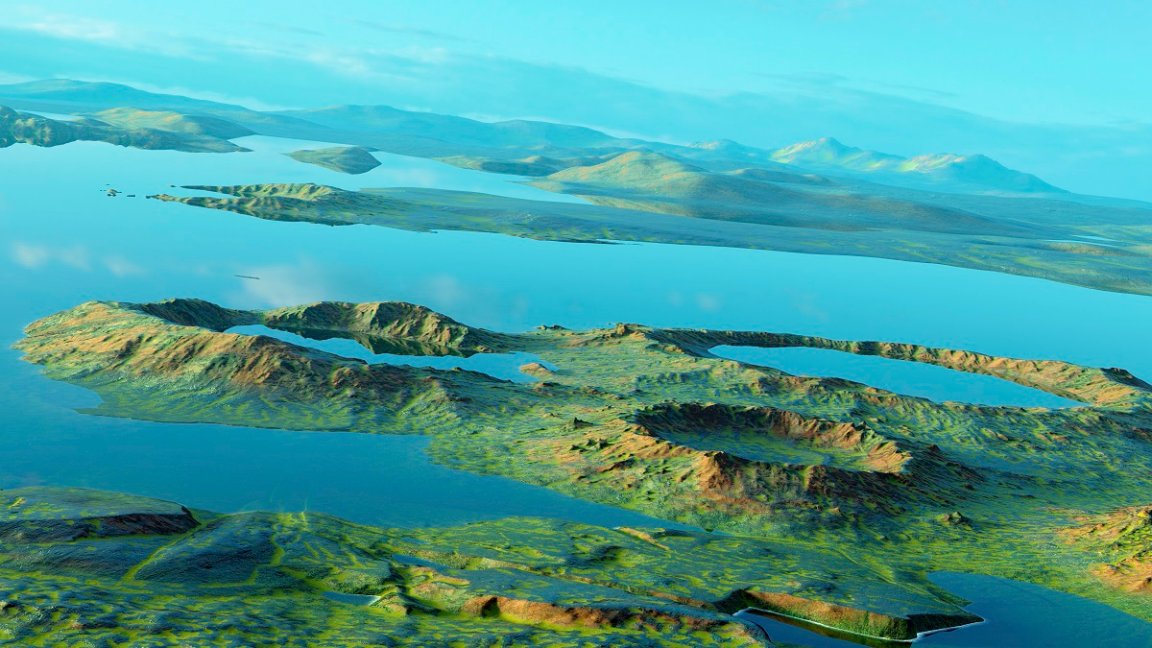
China’s Zhurong Mars rover, which has been exploring the planet’s arid surface since May 2021, has made a fascinating discovery: ancient, “vacation-style” beaches.
The findings, detailed in a new paper published in the journal Proceedings of the National Academy of Sciences, offer the “clearest evidence yet” that Mars once contained huge bodies of water — and therefore could’ve been amenable to life.
“We’re finding places on Mars that used to look like ancient beaches and ancient river deltas,” said Penn State assistant professor of geology and coauthor Benjamin Cardenas in a statement. “We found evidence for wind, waves, no shortage of sand — a proper, vacation-style beach.”
The research adds to a growing body of evidence that the Red Planet was once dominated by water, much like Earth today. Cardenas and his collaborators have previously found evidence of lush streams of water carving channels and craters into the planet’s surface millions of years ago.
Now it sounds like Mars was likely home to massive oceans as well, which would be “potentially habitable environments,” as coauthor and University of California, Berkeley geophysicist Michael Manga told ScienceAlert.
“Hence the ‘follow the water’ theme of Mars exploration,” he told the outlet. “Most exciting to me was the chance to look beneath the surface at a place we think there could have been an ocean and to see what we think are beach deposits.”
The Chinese National Space Administration’s Zhurong rover has been exploring a massive impact basin, roughly 2,100 miles in diameter and called Utopia Planitia, looking for signs of ancient water or ice. Its ground-penetrating radar allows it to peek below the planet’s surface to identify rock formations and sedimentary deposits.
Cardenas and his colleagues examined this data, discovering similar “foreshore deposits” with a downward slope closely resembling Earth’s beaches.
“This stood out to us immediately because it suggests there were waves, which means there was a dynamic interface of air and water,” Cardenas said in the statement. “When we look back at where the earliest life on Earth developed, it was in the interaction between oceans and land, so this is painting a picture of ancient habitable environments, capable of harboring conditions friendly toward microbial life.”
“The structures don’t look like sand dunes,” Manga told ScienceAlert. “They don’t look like an impact crater. They don’t look like lava flows. That’s when we started thinking about oceans.”
Apart from supporting the hypothesis that Mars’ northern hemisphere and its north pole were once covered in a massive ocean, the findings paint a more nuanced picture of how these systems appear to have changed over time.
“We tend to think about Mars as just a static snapshot of a planet, but it was evolving,” Cardenas explained. “Rivers were flowing, sediment was moving, and land was being built and eroded. This type of sedimentary geology can tell us what the landscape looked like, how they evolved, and, importantly, help us identify where we would want to look for past life.”
It’s a particularly promising area, they say, even compared to other water-rich locations.
“Shorelines are great locations to look for evidence of past life,” Manga told ScienceAlert. “It’s thought that the earliest life on Earth began at locations like this, near the interface of air and shallow water.”
More on Mars: It Kinda Sounds Like NASA Is Gutting Its Plans for a Moon Landing